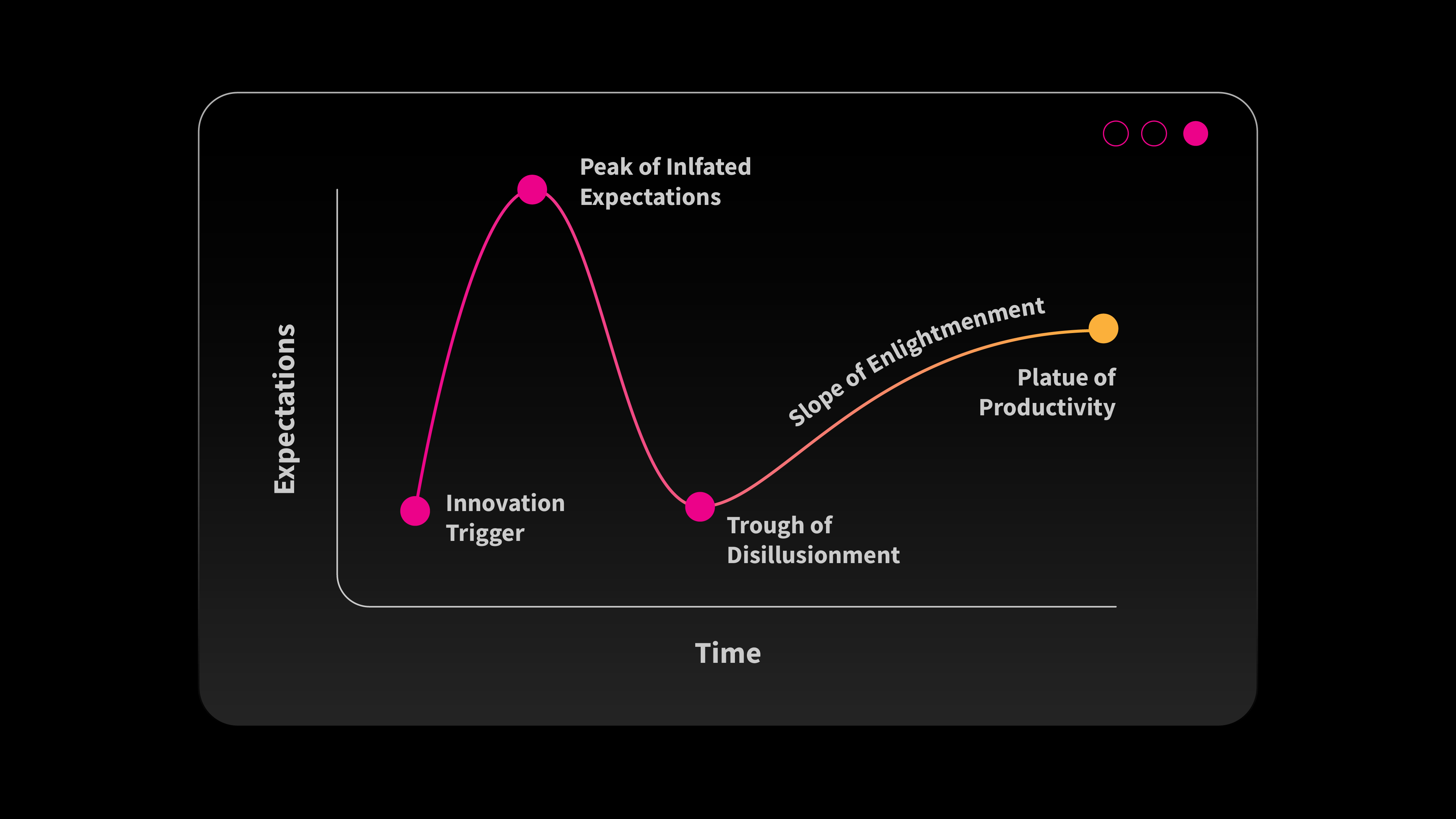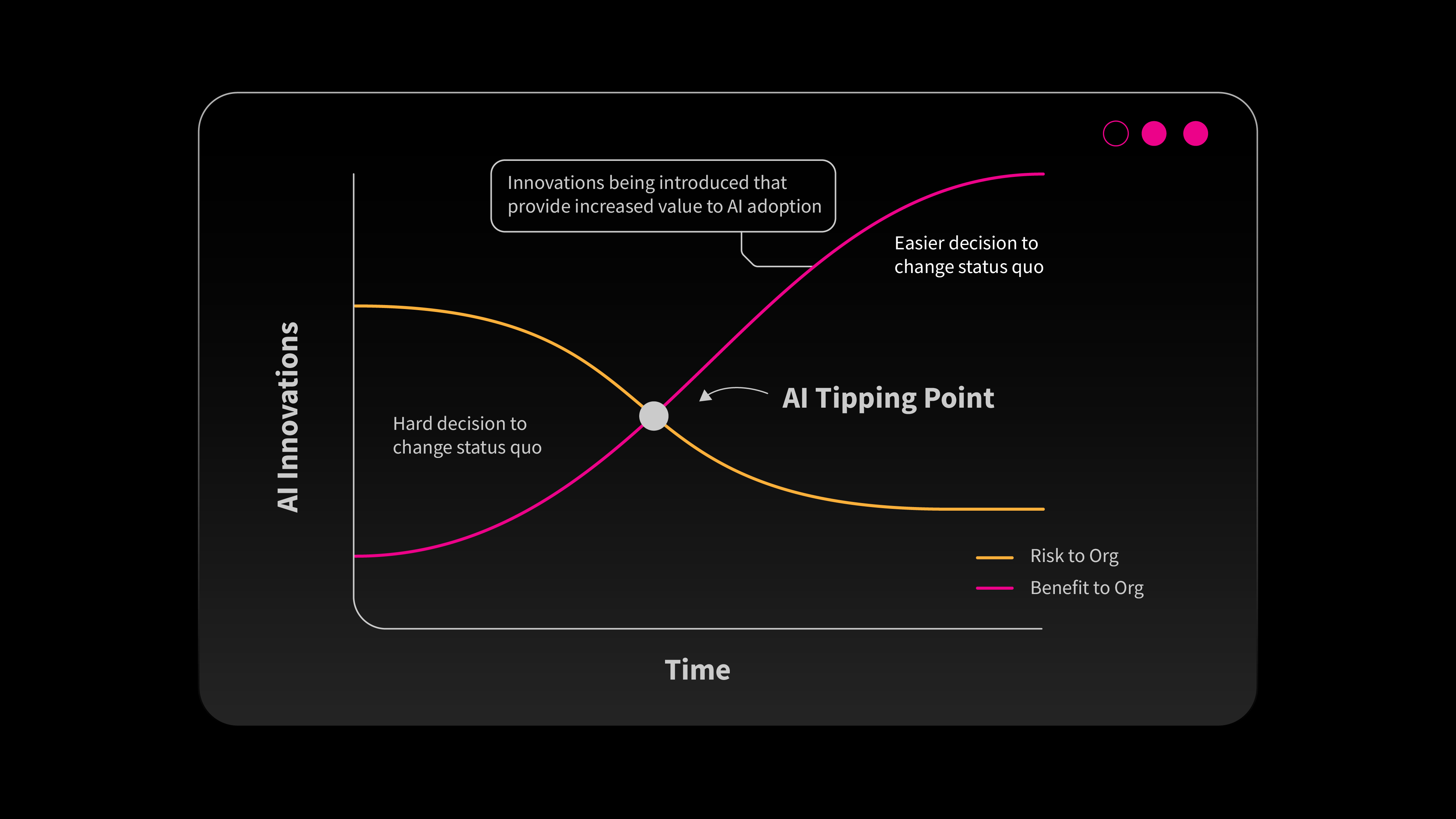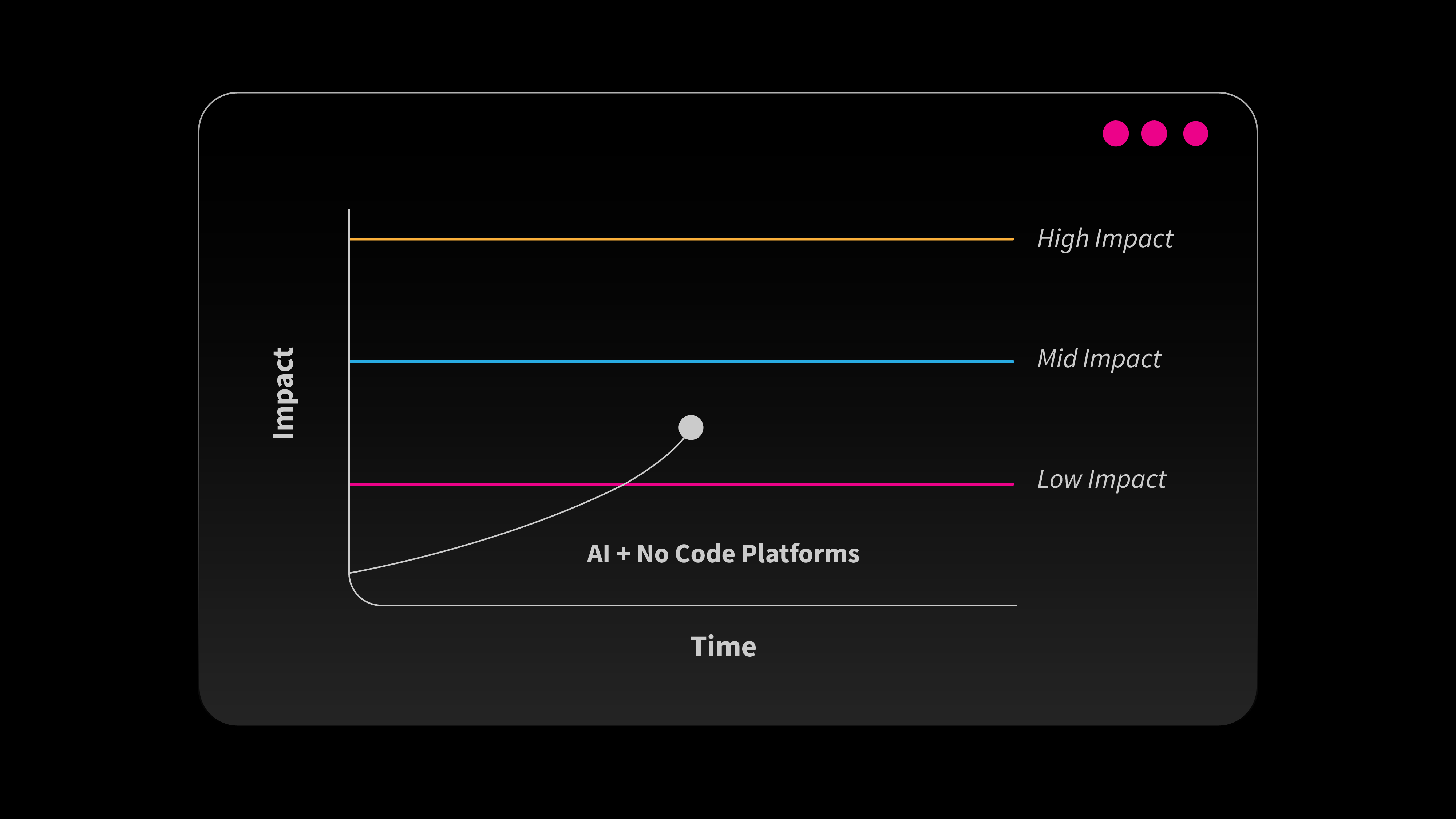Do you find yourself questioning the value of AI?
You’re definitely not alone.
If you aren’t excited about AI today, you haven’t yet encountered a use case that is meaningful to you.
There’s a good chance you’ll shift to a believer at some point this year.
Here are three charts that tell a story of where we are today and where we’re going in 2024.

The Gartner Hype Cycle presents the typical journey a new innovation takes to reach acceptance and adoption.
An innovation is released. Expectations are inflated. People naturally become skeptical and become disillusioned with the idea.
We have seen this time and time again with AI: “AI is going to change the world!” “AI is going to take our jobs!”
The truth is, change doesn’t happen overnight. And to the individual, it’s not clear that it will ever meet the hype. So skepticism remains.
Think about flip phones, blackberries, and then iPhones. That transformation didn’t happen in a year. It took some time. Microsoft was so confident about the Windows Phone 7 that they staged a mock funeral for the iPhone in 2010..
In 2024, I think we will start to see a shift. As demonstrable benefits increase, the individual or organization climbs up the slope of enlightenment. They see the technology for what it’s truly worth to them. These days, it’s pretty hard to argue that the iPhone form factor has not impacted mobile telephony.
If you’re not seeing AI as a game changer, then there isn’t a use case that has impressed you yet.
If the AI advocates are true and improvements come exponentially, then this year we should start to see a rapid climb up the slope of enlightenment.
This means more and more use cases with demonstrable benefits are on the horizon.

Enter chart number two, the AI Adoption Model. This chart was something that Liza Adams and I discussed last summer as a spin off of a LinkedIn post she had made.
This chart demonstrates a risk/benefit tradeoff that will serve as an impediment to adoption in the short term.
Changing the status quo when the risks, or perception of risks, outweigh the benefits is a difficult choice for organizations to contend with.
What if you started making decisions for your organization based on GPT 3.5? Or made a massive investment in a product, just to have a new Custom GPT make it irrelevant?
With the clarity of hindsight, we can see that many of these bad decisions were made. Although it’s somewhat arguable that these risks were predictable even a year ago.
So as new innovations are released and the use case benefits become clear to the organization, changing the status quo and adopting new tools and processes becomes a much easier decision.
Risks like using proprietary data in training models have been seen as a major hurdle. New offerings, however, are addressing these issues head-on. For example, this is front and center in the new “Teams” option for ChatGPT.
In the end, there really isn’t a choice at all.
AI adoption will actively or passively take place. Passive adoption will happen because AI will be baked into existing tools that organizations have already adopted.

This final chart was presented by Scott Brinker at a conference I attended last November.
This is another look at the evolution of AI. While Scott included “AI + No Code Tools” in this image, it could just as easily be labeled “AI” instead.
This chart shows that current AI tools have had a low impact on the organization. Things like writing emails, summarizing meetings, creating digital art for social – these aren’t transforming organizations overnight.
But the growth curve is steep, if not exponential. Have you ever seen the original DALL·E image creation? It was abstract if we’re being generous.
However, if we believe that improvements will continue – possibly exponentially – then we’ll eventually have tools that have a medium-level impact on the organization. This could be an AI agent that performs tasks that double the output of an employee, for example.
If you’ve seen some of the text-to-video generation tools, you’ll know that they’re going to transform the creative space. Kanye West just released a music video that is all AI generated.
Change is starting.

History has shown us that with every major innovation, some organizations (and individuals) adapt and some organizations don’t. I used to go to Blockbuster every weekend. I used to have a portable Toshiba CD player with headphones that didn’t skip!
AI is going to bring about changes at a rate we haven’t experienced before.
And if you’re not yet convinced, it’s because you haven’t seen a use case that is meaningful to you.
I’ll bet you a coffee that sometime in 2024 you’ll see something that changes your mind.